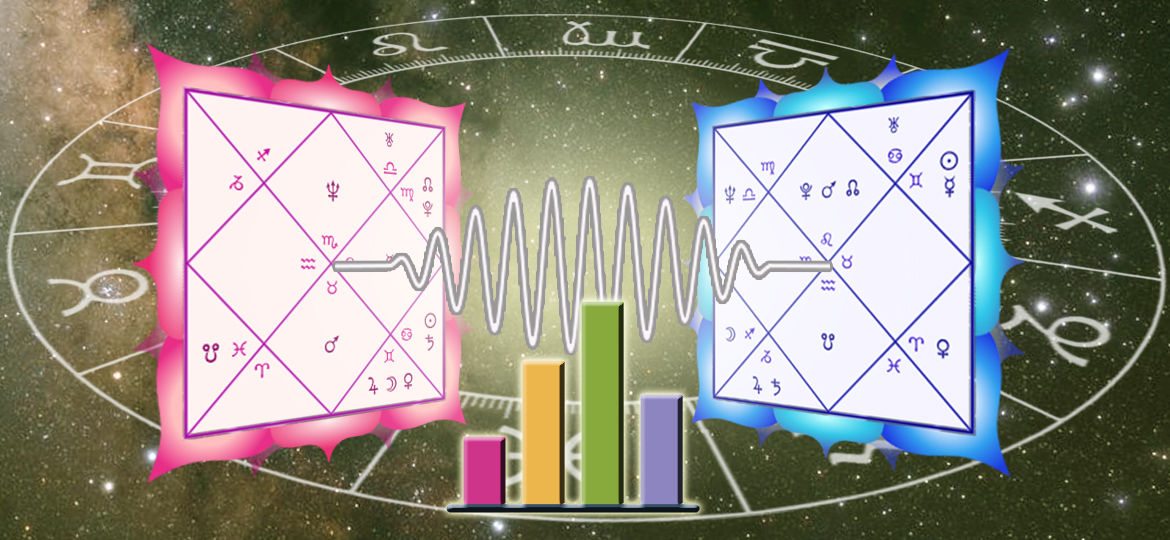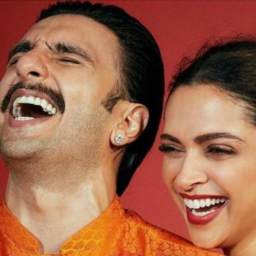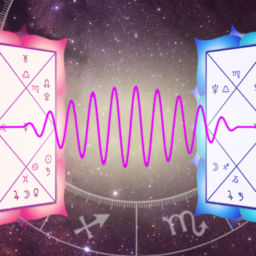
Aṣṭhakūta – Research
The astrological technique called Aṣṭhakūta (commonly referred to as Guṇa Milān) has, for centuries, been the most used technique to match people for the purposes of marriage. Ever since I started my study of Jyotiṣa, in 1989, I have never seen any attempt to validate this method statistically. Please correct me in the comments below if I’m wrong, as I am eager to see any solid research in this area.
I admit I have been a bit sceptical that only one factor in the birth-chart can yield such a fundamental judgement as to deciding the future of two individuals. In general practice it is only the degree of the Moon in the two charts that is supposed to do all this magic.
As I am in the process of fine-tuning the astrological compatibility algorithm for the FindingYou dating app, I wanted to get an idea of how effective Aṣṭhakūta actually is.
The Data and The Hypothesis
Most of the birth-chart data was extracted from the AstroDataBank. Only birth-charts that had Rodden Accuracy Rating of AA, A or B were selected, which removes most doubt that the results will be skewed due to incorrect or absent birth-times. A few charts from my personal collection and the same accuracy restrictions were added.
- Long marriages that did not result in a divorce and are either ongoing or ended with the death of one of the two. To be specific, 29 of these long marriages ended when one of the spouses died. This group also contains 13 pairs of ongoing long marriages. This group has 84 Individual birth-charts and 42 birth-chart pairs.
- Short marriages that resulted either in a divorce or early death of one of the spouses. All the marriages in this group ended in divorce or irrevocable separation. By the latter I’m referring to 3 couples that committed crimes together and were separated by imprisonment. This group has 102 individual birth-charts and 51 birth chart pairs.
Important: the hypothesis tested here is not about whether these people were happy in their relationship, but the main concern was the duration of the marriage and how it ended.
So the hypothesis question is:
Do the overall scores of the Aṣṭhakūta system correlate to longevity of a marriage?
For this to be true, the Long marriages should have higher scores than the Short marriages.
Overall Aṣṭhakūta score
The Aṣṭhakūta system contains 8 categories all generated from the unique position (or degree) of the Moon, in both charts, relative to the Rashis (sidereal signs) and nakshatras (the 27 Lunar mansions that overlap the signs.
The maximum score is 36. There are three score groups:
- High score: when the total score is 24 or above (upto 36)
- Medium Score: when the score is between 15 and 24
- Low Score: when the score is below 15
We sorted the total scores of Long and Short marriages according to the three score groups and the results are shown below.
Keep in mind, the Short marriage group was bigger by 9 pairs and I have not corrected the data to account for this difference. I welcomed this difference as the data outcome would be naturally skewed in favor of the Short group. And in my mind this makes the outcome much more interesting.
Clearly the Long marriage group shows a stronger inclination towards higher scores.
The Kūtas – Categories of Aṣṭhakūta
For more information on each of these kūtas check out this article.
The 8 categories of the Aṣṭhakūta system are as follows:
- Varṇa Kūta with maximum score of 1
- Vaśya Kūta with maximum score of 2
- Tāra Kūta with maximum score of 3
- Yoni Kūta with maximum score of 4
- Maitri Kūta with maximum score of 5
- Gaṇa Kūta with maximum score of 6
- Rāśi Kūta with maximum score of 7
- Nadi Kūta with maximum score of 8
In order to detect which of these kūtas were more vital for judging marriage duration I took a different approach and calculated the mean (average) of the scores in both test groups.
The average doesn’t give the full picture, but it highlights that the Gaṇa and the Rāśi Kūtas seem to incline to a higher score for the Long marriage group. Keep in mind the data hasn’t been adjusted yet for the difference in group size.
Gaṇa and Rāśi Kūtas show higer frequency in the Long group, while Nadi Kūta, surprisingly, takes the lead in the Short group.
The graph below shows how many pairs in each group got no score (zero) in each of the Kūta categories.
The Short marriage group clearly has a predominately higher frequency of no scores in all categories except Nadi Kūta. Particularly the differences in Varṇa, Gaṇa and Rāśi Kūtas are potentially quite interesting.
Limitations of this study
- Both groups are likely to show a degree of compatibility as these were real marriages most of which produced children.
- There is still no control group that shows expected results from which we can calculate the effect size.
- The various Kūtas are calculated and scored differently in the various traditions of India. Further study is needed for each of these methods.
Conclusion
As stated before I was sceptical of the effectiveness of a single birth-chart factor having a fundamental effect in deciding if a marriage will last or not. But after this number crunching my scepticism has resided slightly, as there seems to be a measurable effect.
Further testing is needed with bigger sample groups and a control group to validate or falsify these findings.

